|
Autumn at Grazer Kunstverein
19 September – 22 November 2019
Riccardo Giacconi
Options
Options was an exhibition and performance event by Riccardo Giacconi for steirischer herbst ’19 — Grand Hotel Abyss and Grazer Kunstverein’s Autumn Season.
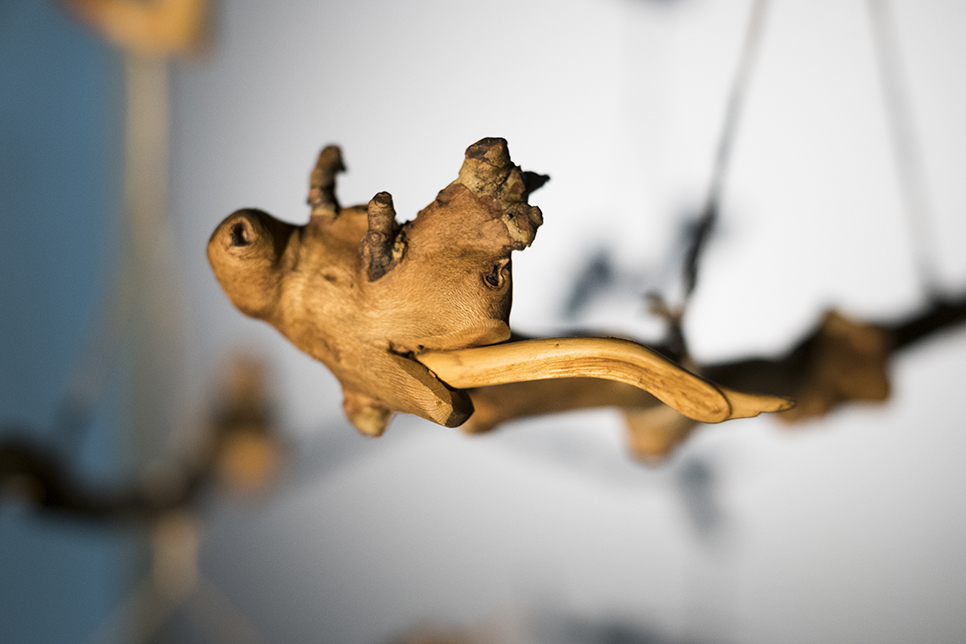
Riccardo Giacconi, Option (detail), 2019, in collaboration with Compagnia Marionettistica Carlo Colla & Figli. Photo: Clara Wildberger. Image courtesy of steirischer herbst and Grazer Kunstverein
As a research-based body of work, Options takes its cues from the events between 1939 and 1943, when the native German-speaking people of South Tyrol were given the option of either emigrating to neighbouring Nazi Austria (and other Third Reich territories) or remaining in Fascist Italy and being forcibly integrated into the mainstream Italian culture, thereby losing their language and cultural heritage. This system, enforced after an agreement between Mussolini and Hitler, was called the “Option Agreement” (Die Option or Südtiroler Umsiedlung).*
This project stems from research into archive and propaganda materials from the era. The artist studied posters, leaflets, newspaper articles and political pamphlets from and about South Tyrol. Options also addresses the aftermath of the Option Agreement, including episodes of tension, conflict and terrorism between communities in South Tyrol, making use of archival materials and an extensive research in situ, including interviews with historians, activists, politicians, writers and various practitioners.
Taking the South Tyrolean territory and the frontier between Italy and Austria as a case study, Options questions ideas of citizenship, borders, identity, language communities, Heimat, nativism, minority, and migration. The Option Agreement period and its aftermath may serve as a paradigm of how such ideas are constructed, manipulated, instrumentalized, fictionalized and revoked following whims of institutions of power – and of how such ideas result in producing concrete, dramatic and indelible consequences on people.
The project establishes resonances between those ideas – and the way they were used in the linguistic and visual discourse of the Option Agreement period – and the use of the same ideas in contemporary political discourses in Europe. In this sense, Options is not configured as a historical investigation, but as a constellation between two moments in time – as a commentary on today’s European political discourse through the lens of a past event.
*This year, 2019, marks the 80th anniversary of the Option Agreement, and the 100th anniversary of the Saint-Germain Treaty, which separated South Tyrol from Austria and annexed it to Italy.
List of Works
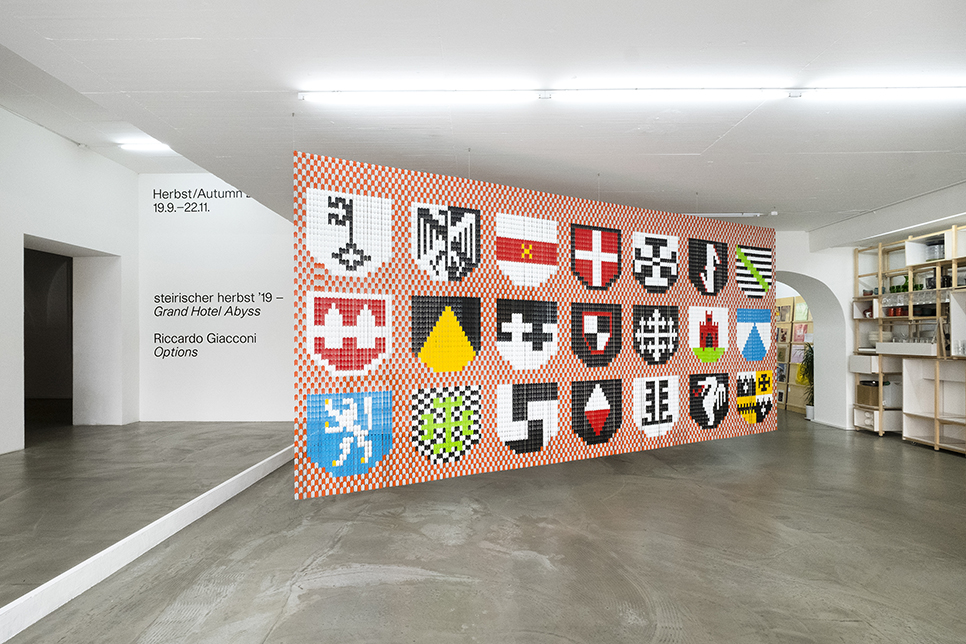
Riccardo Giacconi, Wappenrolle, plastic curtain, 220cm x 500cm, 2019. Photography by Clara Wildberger
1
Wappenrolle
plastic curtain, 220cm x 500cm
2019
This work is an introduction, a threshold, a backdrop, a roll of arms (Wappenrolle): an index of heraldic symbols collected and adapted by the artist to create a visual lexicon of fictional icons that take their meaning from graphic imagery and heraldic traditions. Composed of a series of plastic pixels or pieces, the curtain is a visual catalogue of 21 coats of arms, featuring shields of South Tyrolean towns and propaganda symbols from the Option events. The work is accompanied by a text at the back of this booklet: a “blazon”, which in heraldic terms indicates a description of a coat of arms from which the reader can reconstruct the appropriate image. In this case, the “blazon” functions as a fragmentary chronology of 21 South Tyrolean events.

Riccardo Giacconi, Option, audio and light play, 40’00”, looping, 2019. Photography by Clara Wildberger
2
Option
audio and light play, duration 40'00", looping
2019
This work is an automated shadow play, a looping choreography of sound and light. The audio track is composed of excerpts from letters written to and from South Tyrol in the years 1939 to 1943. Such letters, before being delivered, were opened and translated into Italian by the Fascist Minister of the Interior. Nowadays, such translations are collected in the Central Archives of the Italian State. Riccardo Giacconi has asked a series of South Tyrolean people to re-translate such letters into their original language. As in a radio play, the different voices are arranged into a dramaturgy. The shadows are cast using a set of sculptural objects, specifically built by Colombian sculptor Herlyng Ferla and by the Carlo Colla & Figli Marionette Company, one of the most renowned puppetry companies in the world, with nearly three centuries of activity to their name. Their wooden forms, something between animal and anthropomorphic, refer both to the Tyrolean woodcarving tradition and to imaginary creatures haunting the legends of the region (Krampus, Peaschtl, Perchta, etc.) The main language of the play is German.

Riccardo Giacconi, Tingierung, series of posters, 100cm x 70cm, 2019. Photography by Clara Wildberger
3
Tingierung
series of posters, 100cm x 70cm
2019
This work is composed of a series of seven posters, printed by Litografia La Linterna in Cali, Colombia, using 19th Century letterpress machines. The posters display a series of fictional coats of arms: visual signifiers presented as elements of a potential heraldry based on the design of Fascist and Nazi propaganda materials related to the Option Agreement. Coats of arms and heraldry are visual constructions that have been used for centuries to represent an identity and a belonging to specific geographical, social, familiar, military or religious groups. In this series of posters, this coded language is used in order to question concepts such as identity, Heimat (homeland) and belonging, which were recurrent in the Option-related propaganda and that are recurring in today’s political discourse. Heraldry, as a symbolic identitarian language, is intrinsically conflictive, relational, political. The posters also include extrapolations of texts from propaganda materials related to the Option Agreement. Through a fictional heraldic symbolism, mimicking the tone of calls to the local population but devoid of indications of a specific ideology, the posters spread clues of an unlocated political vibration. One of the posters includes parts of a poem by South Tyrolean poet Norbert C. Kaser (1947–1978). The title for this series of posters, Tingierung means ‘tincture’, referring to the limited palette of colours and patterns used in heraldry, wherein the colour orange was avoided, and considered a ‘stain’.

Riccardo Giacconi, Ekphrasis, sound/light installation, duration 18’00”, looping, 2019. Photography by Clara Wildberger
4
Ekphrasis
sound/light installation, duration 18'00", looping
2019
Inside a dark room there is a beam of ever-changing light and an audio track. As in a session of hypnosis, a voice guides the visitors into a slideshow without images. It describes a series of situations, which listeners are invited to inhabit. Devoid of any references to date, names or locations, the voice describes a set of images connected to pivotal moments in the conflictual genealogy of the South Tyrolean territory. The main language of this work is English.
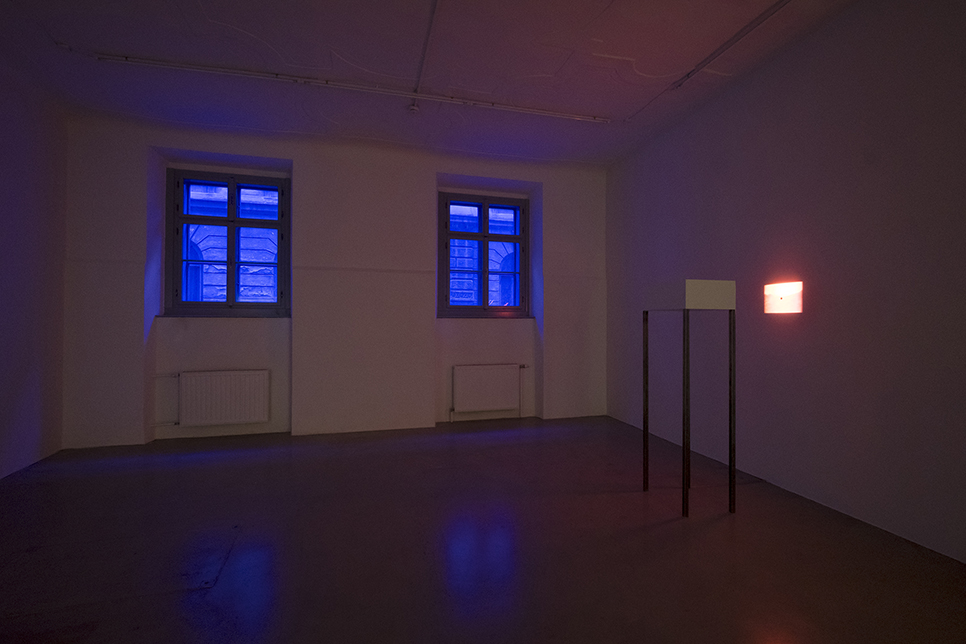
Riccardo Giacconi, Gegenbild, video projection, duration 18’00”, looping, 2019. Photography by Clara Wildberger
5
Gegenbild
video projection, duration 18'00", looping
2019
The mute film projected in the back gallery is the counter-image (Gegenbild), the complementary element to Ekphrasis. It is composed of a series of photographs from different archives, forming a visual study on the history and landscape of the North and South Tyrolean territory.
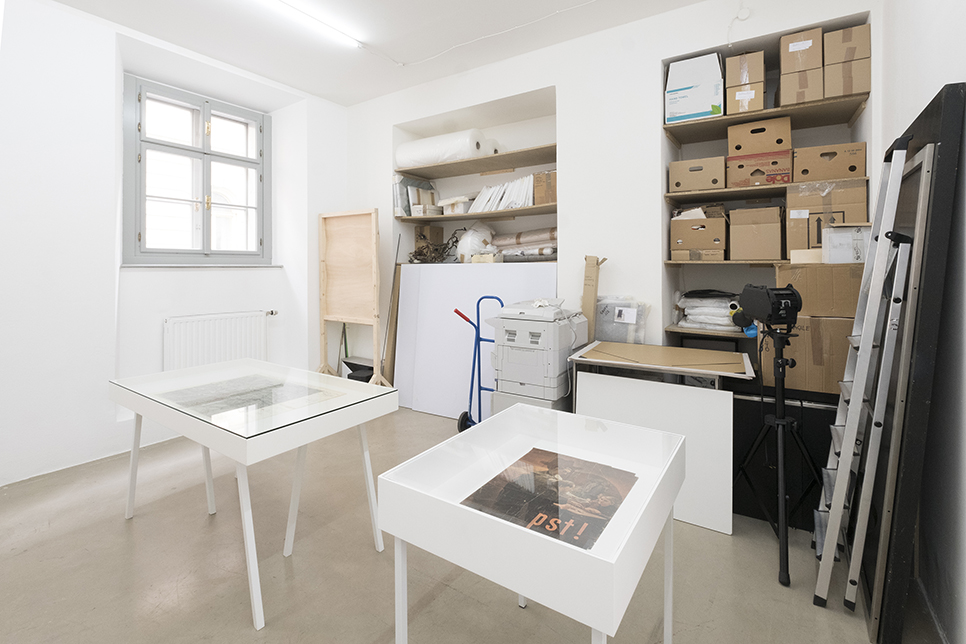
Riccardo Giacconi, Miscellanea, ephemera, various dimensions. Photography by Clara Wildberger
6
Miscellanea
ephemera, various dimensions
A series of original documents, kindly on loan from the Stadtarchiv/Stadtmuseum Innsbruck, including:
• A 1960 large trilingual map of Tyrol, with indications of linguistic areas.
• A propaganda poster, probably from 1942, warning against spies in public spaces.
• A 1940 propaganda xylography poster for Optanten by South Tyrolean artist Heiner Gschwendt, celebrating the attachment to their land and the embrace of the new Heimat.
Throughout the exhibition spaces, further related documents, ephemera and fragments of research can be found.

Riccardo Giacconi, Merkblatt, documentation of performance, 2019. Photography by Clara Wildberger
7
Merkblatt
documentation of performance
2019
In addition to the exhibition, the project includes a performance in Graz’s public space, as part of the opening programme of steirischer herbst ’19. The performance titled Merkblatt (meaning ‘leaflet’ in English) took place on 20 September at Schloßbergplatz, consisting of a 13 year old girl shouting a looping series of sentences, a format reminiscent of “newsboys”, young street newspapers vendors. Together with South Tyrolean poet Katja Renzler, Riccardo Giacconi has worked on a textual deconstruction of a series of 10 “commandments” (Gebote) for “resettlers” (Umsiedler), published in a booklet distributed to South Tyrolean resettlers during the Option period. During the performance, the original text is de-constructed: sentences are progressively shuffled, words are altered, and the “commandments” reveal an increasingly ambiguous, absurd, violent character.
Blazon
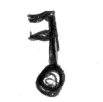
1494 (or 1496)
Albrecht Dürer, on his trip to Italy, visits Klausen and makes a sketch of the town, which he later uses for his copperplate engraving entitled Nemesis.

1957
A mass demonstration at Sigmundskron Castle, near Bozen-Bolzano. 35 000 South Tyrolean people attend the rally of Silvius Magnago, the new chairman of the South Tyrolean People’s Party (SVP), demanding separation from the Italian Trentino province.
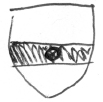
1921
Around 400 Fascists from different Italian regions arrive at the Bozen-Bolzano Spring Fair where, during the costume parade, they attack participants and spectators with clubs, pistols and hand grenades. Around 50 South Tyrolean people are injured. The school teacher Franz Innerhofer is shot while trying to protect one of his pupils.
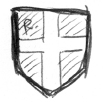
1919
During the Peace Conference in Paris following the end of WW1, the Germanspeaking territory of Tyrol is split in two. The section south of the Brenner Pass is ceded to Italy.

1922
Benito Mussolini takes over power in Italy and enforces measures of ‘denationalization’ of South Tyrol’s German-speaking population, as well as mass settlement of ethnic Italians in the territory.
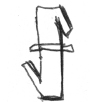
1986
Bomb attack at the Lana-Burgstall railway station claimed by the terrorist organization “Ein Tirol”. A message spray-painted on the station walls reads, “Alexander Langer Sau Walsche”: South Tyrolean intellectual Langer is called a sow and a Walsche (a derogatory South Tyrolean term to indicate Italians).

1973
Writer and poet Norbert Conrad Kaser spends his summer working at the highway toll gate in Sterzing, near the Austrian border. Primary school teacher, aspiring Capuchin friar, Italian Communist Party member and tireless traveller, Kaser is a fierce critic of Tyrolean conservatism. During a talk in Brixen, he calls the audience to “pluck the Tyrolean eagle like a chicken”. In a poem written in Italian, la tua terra, he writes: “do you know that your land / can make you die” (sai che la tua terra / ti può far morire).

1959 and 1984
On the occasion of the 150th and the 175th anniversary of the Tyrolean war of liberation of 1809, a gigantic crown of thorns, symbolising the painful division of Tyrol, is carried by a group of Schützen in a parade in Innsbruck. Schützen (literally: shooters) was a militia formed in 1511 to protect the borders of Tyrol. Dissolved as a result of the dismemberment of the Austro-Hungarian Empire, Schützen have survived as private folk associations in Austria and Italy until today.
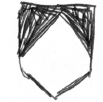
1767
Andreas Hofer, Tyrolean folk hero and leader of the 1809 Tyrolean Rebellion against the Napoleonic invasion, is born in St. Leonhard in Passeier. The Andreas-Hofer-Bund, the only South Tyrolean anti-Nazi resistance organization, formed in 1939, will be named after him. Hans Egarter, Josef Mayr-Nusser, Friedl Volgger and Erich Amonn, its main leaders, mostly come from a Catholic background. Mayr-Nusser refuses to recite the Hitler oath after being drafted as a Nazi soldier, and is sentenced to death at the Dachau concentration camp. He dies en route to the camp in 1945.

1939
Hitler and Mussolini enforce the Option Agreement: German and Ladin-speaking South Tyrolean people are forced to choose between declaring themselves Italians – therefore abandoning their language and traditions – or being relocated to Third Reich territories. 86% of the population opt for emigration; they are called Optanten. Those who choose to stay are called Dableiber. By 1943, only about 75 000 Optanten have emigrated, of whom 50 000 returned after the war.
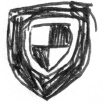
1981
Ever resistant to imposed ethnic boundaries, Alexander Langer refuses to declare his linguistic group (German, Italian or Ladin) during the 1981 census in Bozen-Bolzano. This choice makes him ineligible to run for local elections. Langer had been active in the Italian radical leftist political organization Lotta Continua before joining the Green Party of South Tyrol, eventually becoming president of the Greens/EFA Group in the European Parliament in 1989.
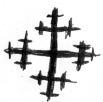
1961
On the night between 11 and 12 June, 37 electricity pylons are blown up in South Tyrol by the BAS (Befreiungsausschuss Südtirol, “South Tyrolean Liberation Committee”), to claim worldwide attention for the “South Tyrolean question”. The date is chosen as a reference to the local custom to light fires (Herz-Jesu-Feuer / “Sacred Heart Fires” ) to commemorate the 1796 vow the Tyroleans made to the Sacred Heart of Jesus, asking protection for their land.
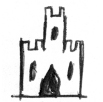
1978
Norbert Conrad Kaser dies in Bruneck from the consequences of his alcoholism. His funeral would be remembered as a rare moment of encounter for dissident and progressive South Tyrolean intellectuals. Alexander Langer would later write: “The destiny of Norbert C. Kaser is symbolic for many in South Tyrol. [...] It was at Norbert’s funeral when I decided to return to South Tyrol, that we wanted no more dead, that something had to be done.” Langer will later found the interethnic movement Neue Linke/Nuova Sinistra (“New Left”).

1961
On the morning of 12 June, road maintenance worker Giovanni Postal dies in an attempt to remove a bomb placed on a tree by the BAS in Salorno, near the southern border of South Tyrol. He is the first victim of the Bombenjahre (“bomb years”).
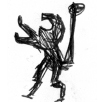
1952
Ettore Tolomei, Italian irredentist and former Fascist senator, is buried in the Montan cemetery. His tomb will be repeatedly damaged, as a sign of contempt. Tolomei had been the main designer of the Fascist policy for the Italianization of South Tyrol. He invented a detailed Italian toponymy to substitute German names, most notably translating the German “Südtirol” with the Italian “Alto Adige”. His program had included the prohibition of the term “Tirol” (and its variations), imposition of Italian as the only official language, closure of Germanlanguage schools, press and political parties.

1964
In a hay barn near Saltaus, BAS member Luis Amplatz is shot in his sleep by Christian Kerbler, probably an agent of the Italian intelligence agency. Fellow BAS member Georg Klotz is also injured with two shots, but manages to escape across the border to Austria. Kerbler is later sentenced in absentia by an Italian jury, but will never be caught.
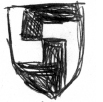
1943
Italian ceasefire with the Allies. With the establishment of the Operationszone Alpenvorland (“Operational Zone of the Alpine Foothills”), South Tyrol is occupied by German Wehrmacht troops and becomes de facto part of the Nazi Reichsgau of Tyrol-Vorarlberg. Anton Spechtenhauser, mayor of Graun im Vinschgau, is arrested thanks to the active help of local Nazi officials. An unscrupulous businessman, collaborator of the Fascist regime, and opponent of the emigration to the Reich, he would die in the Majdanek extermination camp, near Lublin.
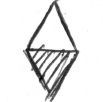
1946
Signing of the Paris Agreement by Italy’s Prime Minister Alcide De Gasperi and Austria’s Foreign Minister Karl Gruber, as an integral part of the Peace Treaty between the Allies and Italy. The agreement envisages special measures to preserve the ethnic identity of the South Tyrolean People.

1969
Long negotiations between Italy and Austria result in the adoption of the so-called “Package” (Paket), a catalogue of measures for a new autonomy statute in South Tyrol, approved by the SVP (South Tyrolean People’s Party), the Italian Parliament and the Austrian National Council. Its full implementation would be completed in 1992.
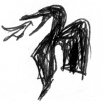
1995
Alexander Langer takes his own life near Florence, hanging himself from an apricot tree. Ten years before his suicide, he had written, “Where there is a latent multilingual vocation, it should be cultivated with care. It is a drive to relativize, to grasp differences, subtleties, nuances that do not suffer translation. All the more so in a Europe with more and more refugees, immigrants ...”

1981
South Tyrolean mountaineer Reinhold Messner, in a TV show, states that he is upset with the continuous abuse of the Heimat myth in South Tyrol, perpetrated “by a people who has betrayed their Heimat like no other, when in 1939, by an overwhelming majority, had opted for Germany, willing to leave their land”. After the ensuing controversy, in 1989 Messner edits a book named Die Option. 1939 stimmten 86% der Südtiroler für das Aufgeben ihrer Heimat. Warum? (“The Option. In 1939, 86% of South Tyroleans voted to give up their homeland. Why?”)
The information for this Blazon was compiled from an abundance of sources by the artist.
The Directorate-General for Contemporary Art and Architecture and Urban Peripheries of the Italian Ministry for Cultural Heritage and Activities supports the participation of Riccardo Giacconi at the steirischer herbst festival ’19 in the context of the Italian Council 2019 Program.
|
![]()
![]()